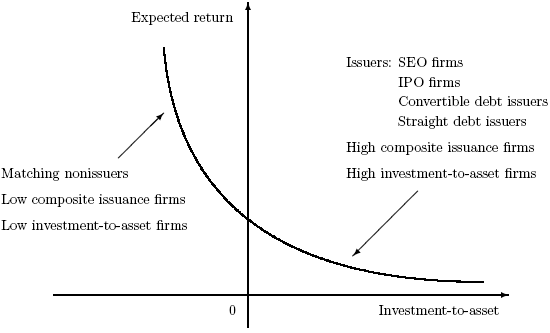The stocks of companies issuing equity/debt tend to underperform. Are there explanations for this tendency other than good market timing by corporate executives of such companies? Are these executives in the driver’s seat, selling high, or are they just along for a ride? In their November 2006 paper entitled “The New Issues Puzzle: Testing the Investment-Based Explanation”, Evgeny Lyandres, Le Sun and Lu Zhang investigate alternative theories of corporate investment as explanations for the subsequent underperformance of companies issuing equity/debt. Using equity/debt issuance data for 1970-2005, they conclude that:
- Results confirm strongly that the stocks of equity issuers (both initial and secondary) subsequently underperform, and reliably that the stocks of convertible debt issuers (but not of straight debt issuers) underperform. Underperformance is worst during the period 13-18 months after issuance.
- A level-of-investment indicator (investment as a fraction of assets) explains a substantial part of the general underperformance of equity/debt issuers.
- Equity/debt issuers tend to be high-investment companies for two to three years after issuance. This relationship is strongest for initial equity offerings and weakest for straight debt offerings.
- An investment strategy that is long low-investment stocks (bottom 30%) and short high-investment stocks (top 30%) generates a significantly abnormal average return of 0.57% per month.
- Results are largely independent of company size and book-to-market.
- These results support theories that imply a negative relationship between level of investment and expected investment returns (as depicted in the figure below). Firms that can easily raise (low-cost) capital tend to take on new projects with relatively low returns, thereby degrading overall company performance in future years.
The following chart, taken from the paper, shows the negative relationship between investment (as a fraction of assets) and expected return on investment. It illustrates the hypothesis that firms (not) issuing equity and debt tend to be companies that are (not) investing heavily in new opportunities.

In summary, the stocks of companies issuing equity and convertible debt tend to underperform over several years as they invest “easy money” into projects of diminishing returns.